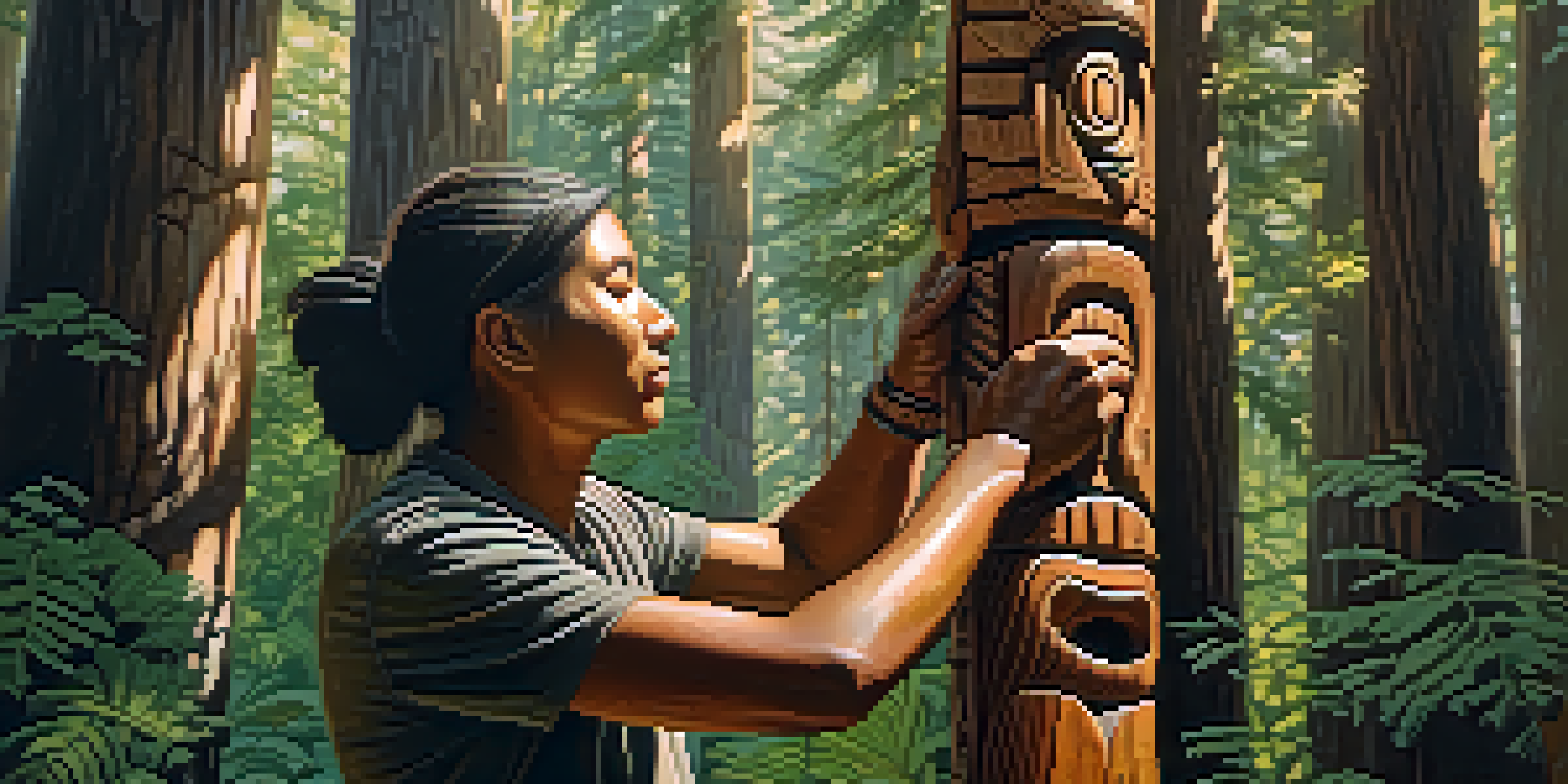Carving as a Medium for Oral Histories in Native Cultures

Understanding Oral Histories in Native Cultures
Oral histories are a vital aspect of Native cultures, serving as a means to pass down stories, traditions, and values from one generation to the next. These narratives often encompass creation myths, historical events, and lessons about nature and community. For many Indigenous peoples, oral storytelling is not just a method of communication but a way to maintain cultural identity and resilience against outside influences. The richness of these stories highlights the importance of preserving them in authentic ways.
The Role of Carving in Cultural Expression
Carving stands out as a powerful medium for expressing and preserving oral histories within Native cultures. It transforms stories into tangible forms, allowing the narratives to be experienced visually and physically. Each carving often symbolizes elements of the story it represents, bridging the gap between spoken word and artistic representation. This practice reflects a deep connection to the land and heritage, making the stories accessible to all who encounter them.
Oral Histories Preserve Culture
Oral histories are essential for passing down traditions and values within Native cultures, maintaining cultural identity across generations.
Materials Used in Traditional Carving
Carvers typically use materials readily available in their environments, such as wood, bone, and stone. Different materials carry specific meanings and cultural significance, impacting how stories are told through carving. For instance, cedar is often favored for its durability and spiritual importance in many Native cultures. By choosing particular materials, carvers not only create art but also reinforce the themes and messages of the oral histories they depict.
Techniques and Styles of Carving
Various techniques, such as relief carving and in-the-round carving, are employed by artisans to bring stories to life. Each technique allows for different interpretations and depths of meaning, making the storytelling experience unique. Regional styles also play a crucial role, as each community has its own distinct methods influenced by their specific traditions and history. This diversity enriches the overall tapestry of Native art, showcasing the vast array of narratives that exist.
Carving Connects Stories and Art
Carving serves as a powerful medium that transforms oral narratives into visual forms, making them accessible and tangible.
Symbolism and Meaning in Carvings
Every carving is imbued with symbolism, often reflecting the themes of the oral histories they embody. For instance, animals, figures, and natural elements might represent various traits or lessons important to the community. This layer of meaning adds depth, inviting viewers to engage with the story on multiple levels. By understanding the symbolism, one can appreciate the intricate relationship between the carving and the oral tradition it represents.
Carving as a Teaching Tool
In many Native cultures, carvings serve as teaching tools, helping younger generations learn about their heritage. As stories are carved into wood or stone, they become a visual guide, illustrating the lessons embedded within the narratives. This tactile experience makes it easier for learners to connect with their culture and understand the significance of their history. Carvings thus become a bridge between the past and present, enabling ongoing conversations within the community.
Innovation Ensures Cultural Relevance
While facing contemporary challenges, artisans are blending traditional carving techniques with modern themes to keep oral histories relevant.
Contemporary Challenges and Innovations
While traditional carving practices are cherished, contemporary challenges threaten their preservation, including modernization and commercialization. Many artisans are now innovating by blending traditional techniques with new materials and themes, keeping the art form relevant. This evolution allows for the continuation of oral histories in a modern context while respecting their roots. Balancing tradition with innovation presents both challenges and opportunities for future generations.
The Future of Carving in Preserving Oral Histories
The future of carving as a medium for oral histories looks promising, thanks to the dedication of artists and communities committed to preservation. By fostering connections between the past and future, carvers are ensuring that these stories remain vibrant and accessible. Efforts to educate others about the significance of these practices can help raise awareness and appreciation. Ultimately, carving will continue to play a crucial role in keeping Native oral histories alive for generations to come.